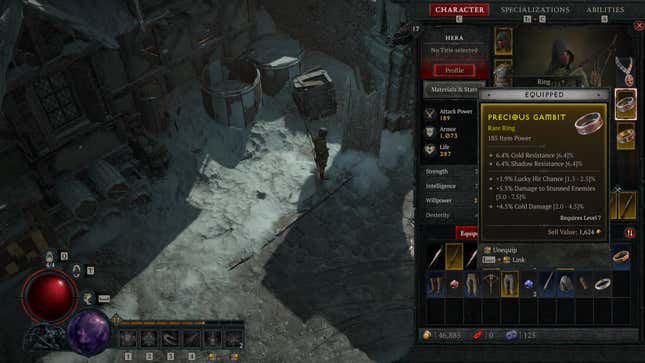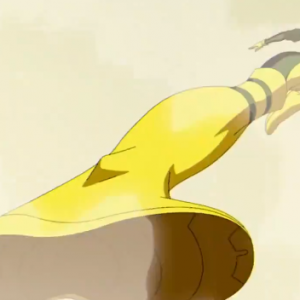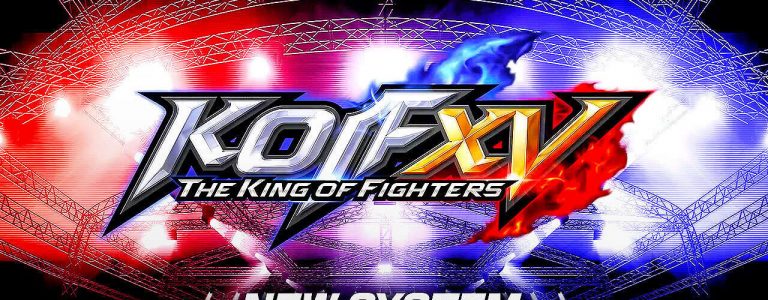Diablo IV is a big game. With multiple classes and tons of skill-tree options, a big-ass map with tons of shit to kill, and so, so much loot to equip, sell, upgrade (rinse and repeat, for eternity), there’s a lot to keep in mind, and so much more that the game kinda-sorta doesn’t tell you.
So let’s go over some of the many features and other unique bits of knowledge the game doesn’t directly spell out for you. Some of these will save you time, others will help you optimize your build. Let’s dig in.
Elite Affixes indicate unique enemy powers
If you’ve come across an enemy and seen terms written before their names like “Vampiric,” “Terrifying,” or “Frozen,” know that those probably aren’t just nicknames given to them by their exes. They’re an indication that you’re facing an “Elite” enemy with unique attributes.
You can find a full list of the Elite Affixes from this wiki. These include terms like “Cold Enchanted,” which means the creature chills any target it touches, and “Hellbound,” which allows the creature to summon a statue that binds your character in chains. That sort of thing. Try to be prepared before you tangle with these weirdly named foes.
It’s okay (and beneficial) to upgrade some gear early on
Diablo IV is likely to hit you with that familiar RPG conundrum: “Should I sell this gear, or upgrade it?” The best answer isn’t always obvious, and the game certainly isn’t going to tell you what you should do with your own gear.
Here’s the good news: It’s not that big a deal. Upgrading early weapons and armors may not be a long-term strategic masterstroke, but it will help you learn the game and get comfortable with its systems. The first couple levels of upgrading an item at the blacksmith are relatively cheap, and in a game like Diablo IV every percentage point matters. While you’ll undoubtedly find better gear the longer you play, getting some firsthand experience with the upgrade system will help you determine what better gear to buff later on.
Not every class is great for beginners
While you can select any class from the beginning, if you are yourself a beginner, you might want to avoid certain classes. The Rogue, for example, while cool as hell, is a tough class to play as your first Diablo character (especially solo, as this game loves to swarm you with enemies).
We recommend kicking off your first Diablo IV adventure with the Necromancer or Sorcerer. Then, once you’ve a better handle on what the Diablo experience is, you’ll be better informed to grab the reins of harder classes.
You can search your skill tree via keywords
Diablo IV’s skill trees can be very, very intimidating at first. Good news: You can search abilities via keywords in the skill tree menu. Say you want to focus on a specific status effect or type of elemental damage? Selecting from the list of keywords is a great way to get a sense of how your build can make the most of such features, highlighting abilities that will relate to that keyword. This it will help you plan ahead so you don’t just stare at the tree menu with a pocket full of unspent ability points.
Don’t sleep on elixirs
Elixirs can make a serious difference when out slaying nasties on the battlefield, especially more complex and dangerous foes. You’ll need to visit an alchemist to craft them. Potions like the “Elixir of Lightning Resistance,” which lets you resist lightning attacks by 20 percent for 30 minutes (in addition to an XP boost), are excellent to pop when going up against specific enemies.
Stock up on elixirs and get ready to use them to meet specific challenges. But you can only carry 33 at a time, which means you may want to consider where you’re heading out to and which foes you’re likely to be fighting depending on how much space you have.
You should hang out with other people
Diablo IV is online only; let’s all collectively groan about that for a moment. But seeing other people, even if you’re playing solo in this dark fantasy world, isn’t a bad thing: You’ll earn an extra 10 percent experience for everything just by being around other people.
Who knew it would be beneficial to be around other people for once?
You should finish the main quest ASAP (but take breaks with side-quests)
Diablo IV really puts the spotlight on its main quest, with elaborate cutscenes, a very dominant antagonist, and plenty of “what’s gonna happen next?” intrigue. You absolutely should try and finish it as soon as you can…but it ain’t the worst thing if you don’t. In fact, it’s a good idea to move on from the main path every now and then (don’t worry, Lilith won’t really care).
Not only does the main story hit you with a couple of difficulty spikes that you’ll likely want to get yourself better equipped and specced out for, but finishing side-quests is a solid way to unlock more portions of map, with waypoints that’ll make traveling around quickly a breeze.
Also, take time to raid different Strongholds, which aren’t all created equal. The Tul Dulra or Onyx Strongholds, for example, unlock waypoints, additional vendors, more side-quests and a dungeon. But the Hope’s Light stronghold nets you a side dungeon and little else. Crusaders Monument in Hawezar just gives you 100 renown.
Some strongholds are far more rewarding of your time and the only way to really know which is best is to get out there and clear a few out—or do a Google to see what’s inside ahead of time.
Read a synopsis of Diablo III: Reaper of Souls to make sense of everything
Lilith? Sanctuary? Horadrim? What do these words mean, and what the hell is going on in this world? Diablo IV features a campaign that should mostly make the big story beats of its narrative obvious, but if you find that not everything makes sense, go on and read a good synopsis for 2014’s Diablo III expansion, Reaper of Souls.
Though Diablo IV doesn’t pick up right after that one, it does contain some critical world building that will help demystify certain aspects of the plot.
Being vulnerable is really, really bad
During my early hours, I kept seeing this cracked symbol coming and going on my health orb. And while I figured out that probably was Not Good™, it turns out this debuff is worse than its simple HUD icon might suggest. When an enemy inflicts you with vulnerable, you’re going to take an extra 20 percent damage. That, in a word, sucks. The only way to make your character less melty is to Run Away™ for about three or four seconds for your health orb to return to normal.
Enemies scale to your level
So ya got killed a few times. Time to go and level up so you numerically devastate your foes just by looking at them, right? Well, not so fast, Diablo IV’s enemies will scale to your level. And enemies in Strongholds will scale to a level above yours.
What does this mean? Well, you can’t just level your way out of poor tactics. While being more powerful is generally a good thing, you still need to take the time to understand how your character works and how your build is coming together. That’s the key to victory, not just grinding forever until your numbers get bigger.
Turn on advanced tooltips

Advanced tooltips made for one of the most essential parts of our guide to Diablo IV’s settings. By turning on advanced tooltip compare and information in the gameplay settings of the main menu, you’ll get a sense of how good every roll is. Each item’s stats will feature a bracketed range of possible outcomes, so you’ll know whether your found item rests on the better or worse side, making keep/sell/salvage/drop decisions that much easier.
Salvaging and extracting is an excellent use of useless loot
Whether you’ve found loot that’s uninteresting or has outgrown its utility, don’t just throw it on the ground (littering is bad!). Instead, you should take that old gear to be salvaged by a blacksmith. The resources that result will then be of use for upgrading the items you want to keep. They will be much more useful than any gold you’d get through selling the gear.
While you may benefit from selling a lot of useless loot early on to get your gold count up, stocking up on upgradables is better, as the equipment you’ll find on the battlefield will almost always be better than what you can buy from a shop. And salvaged materials will go directly toward upgrading gear that’s actually worth it.
And just as you should be salvaging lower-power gear, be sure to save unused legendary gear for extracting. By bringing these items to the Occultist, you’ll be able remove their Aspects, which you can then use to boost Rare items into Legendaries. And extracting often nets you better Aspects than what you get from dungeons, at cheaper material cost to boot.
Grab that gallowvine
Gallowvine is an essential ingredient in potions and elixirs. Become a gallowvine hoarder. You can never have enough gallowvine.
Don’t like a quest? It’s safe to abandon it
I abandon things all the time (in real life and Diablo) and it’s never a bad idea to abandon quests that are either distracting or uninteresting. You can always pick up an abandoned quest again later. Do yourself a favor though and take note of the quests you’re abandoning, so you can look up the names later to figure out where to pick them up a second time if it slips your memory.
Key story and world progress is shared across different characters
Once you finish the main story, you won’t need to do it again for future characters. Also, once you wrap the main story and start getting to work on endgame content like Grim Favors, you’ll unlock those activities for all subsequent characters you make. The same is true of major city waypoints.
Read More: 29 Diablo IV Tips That Will Make You A Better Player
This is good news if you’re not sure whether or not you’re digging your current character and are debating whether or not you should keep going. As we said in our general tips round-up, starting out with a so-so build is far from a bad thing, and it’s worth it to explore. Any time you spend working toward story completion or unlocking new waypoints is time well spent, even if you don’t fully love your current character.
Save irrelevant gear for your future characters
One time, my Rogue picked up a wand. Worried that it’d call me a slur, I got rid of it. But it turns out that by doing so, I was potentially screwing over any future Sorcerer I’d decide to build. Right after the game’s prologue, you’ll get access to your stash in Kyovashad. Anything you put in here is retrievable by other characters you’ll create later on.
So if it’s not a burden to carry around gear that’s not for the class you’re immediately playing, consider stashing it. Your future, other yous will thank you.
Diablo IV is a gargantuan experience, but these basic tips will help you wrap your head around it a little more. What other unmentioned, unexplained features have you found helpful?
























